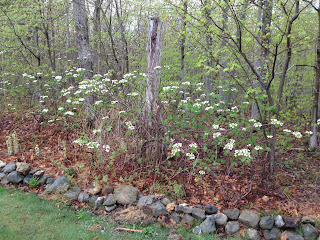The intention of this blog is to keep you informed of the comings and goings of the maintenance team and provide updates on the conditions at Stowe Mountain Club. While the blog was off to a good start, July simply flew by with no posts. My apologies. With that said, let's get back to business.
Wow, what a crazy weather season! The weather has been the top story around these parts. The golf course has received 29 inches of rain since May 1st. I need to thank the crew for powering through all these rainy days and getting things done around the golf course. The greens, tees, and bunkers have perfomed beautifully with all this precipitation. The main reason for this is because of good drainage. Greens, tees, and bunkers are built out of sand and have great subsurface drainage. As in the real estate industry where it is all about location, location, location. The golf turf industry is all about drainage, drainage, drainage. It is simply no fun to play golf on a soggy course mainly because the ground game disappears and your bump and run turns into a bump and slop.
The biggest challenge on the course due to the wet weather has been the fairways. Our fairways have good surface drainage due to the various catch basins located in the fairways. The challenge comes with the thick, rocky mountain soils that the fairways are planted on. These soils drain very slowly. With excessive rain the low areas in the fairways just don't dry out. Our actions are focused on identifying these wet areas and fixing them. The fix is to locate any springs that may be bleeding into the area and move that water out of the area through pipes. Or, if it is simply low and stays wet we will dig out the native soil and add pure sand. The later of these two scenario's usually occurs around catch basins where storm water is concentrated.
 |
| Pipe back filled with stone and sand being placed around the catch basin |
A good example of this process of drying out wet areas is the project that was recently completed on the 13th hole. Due to the exccesive rain, ground water springs that cause wet fairways in the Spring were problematic well into July. The left of the 13th green was a quagmire for 3 months due to a spring coming out of the hill. This was a call to action for the maintenance team because the area is a critical play area.The process involves removing the sod, piping the spring to the nearest catch basin, removing the native soil, placing sand around the catch basin, and replacing the sod. Due to this work, a tee shot that misses the green to the left can be putted back on the green off of a dry and firm surface. The process described above has been executed in over a dozen areas around the golf course over the years. It is a primary focus of the maintenance team to continue to fix these chronic wet fairway areas. As the weather patterns continue to prove to be extreme in their nature, these drainage improvements will play a critical role in making Stowe Mountain Club playable in all conditions.


































